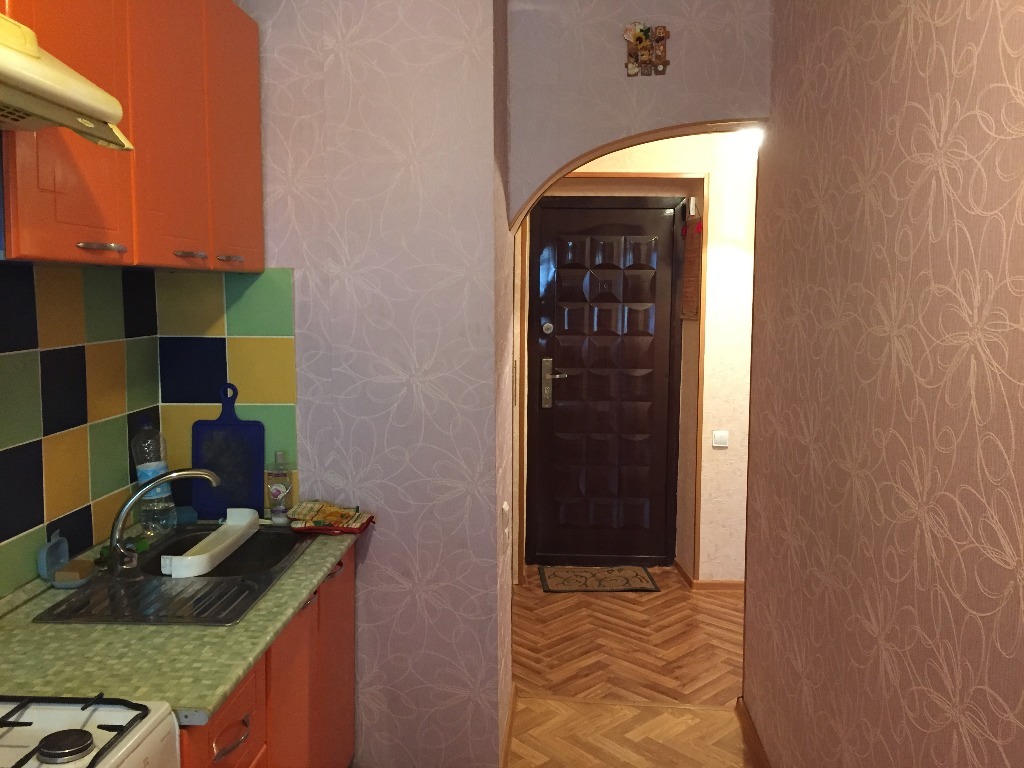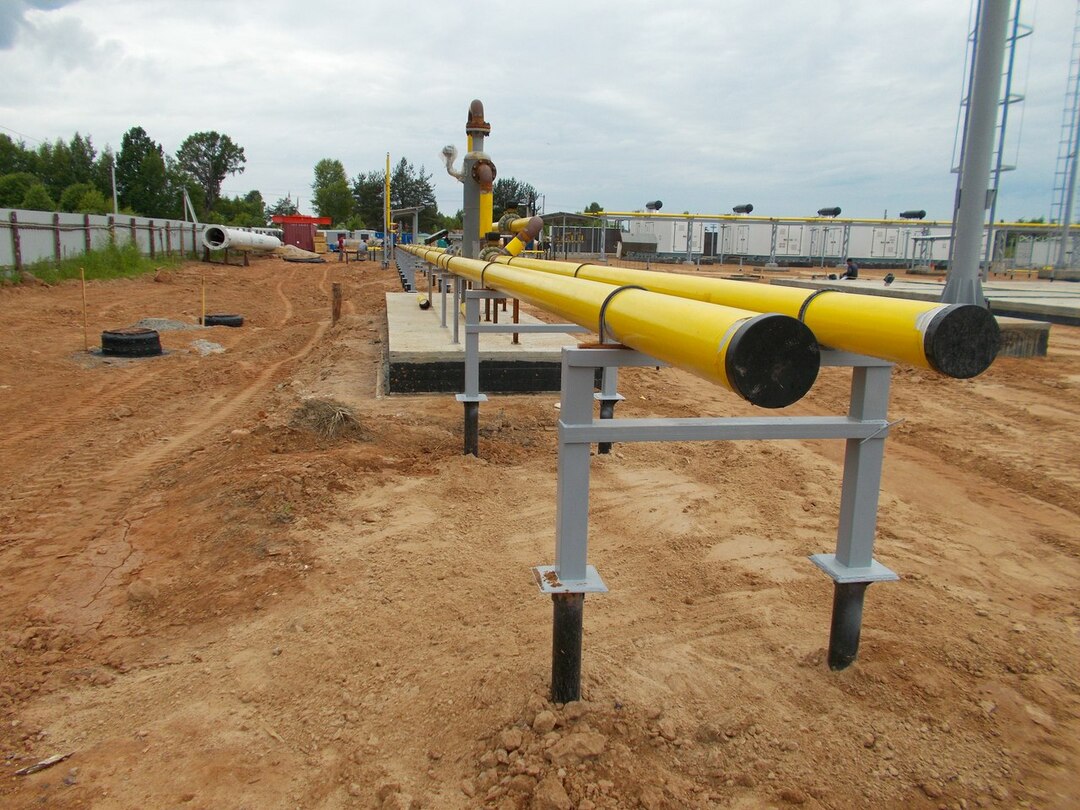The number of high-rise buildings is growing every year along with their possible number of storeys. And the higher a person “climbs”, the more expensive the apartment is. But at the same time, not all modern amenities are available to the lucky owners of a panoramic view of the city. Previously, legislative documents used to strictly regulate up to which floor the houses were supplied with gas, but the norms and laws are constantly changing, the data of recommendatory and mandatory documents differ.
Agree that counting, for example, on the long-awaited housing in a new building, you want to know exactly all the nuances and technical capabilities in advance.
When “blue fuel” appears in each apartment, is it possible to gasify the entire high-rise building with an autonomous gas holder, to which floor the main gas will reach and what documents normalize the rules of resource supply them MKD? We will try to answer these and many other questions for you in detail.
The content of the article:
- Gasification regulatory documents
- Main gas in a high-rise building
- What is the danger of gasification?
- Projects to ban gasification of high-rise buildings
- Conclusions and useful video on the topic
Gasification regulatory documents
The law determines that on a site officially registered as individual housing construction, it is impossible to build houses, the number of storeys above the level of the basement exceeds 3 levels or 12 meters from the ground to the level of the roof ridge.
Even according to the old regulations and laws, restrictions on gasification began only from the 5th floor. Therefore, we initially, when discussing above which floor or footage above ground level, it is impossible to conduct gas, deliberately postponed individual housing construction and began to talk about the possibilities of equipping apartment buildings, starting from 5 tier.
To begin with, let's figure out the autonomous gas supply.

The installation of autonomous gas supply to MKD with the help of tanks is recognized as a reliable source of gas supply. So since 1952 there has not been a single explosion of a properly equipped gas tank.
"Technical regulations on the safety of home gas equipment" in clauses 1.2 and 1.3 states that the supply of fuel from tank installations can be carried out into buildings up to 10 floors, in the case of using group cylinder installations - no more than 5 floors.
That is, autonomous supply is possible from 5 to 10 floors, depending on the type of devices used in the distribution, you will hardly be able to arrange the supply higher.
One of the first documents that normalized the main gas supply of high-rise buildings was SNiP 2.08.01-89 "Residential buildings". It has a veto on the installation of gas boilers and pipes supplying them above the 5th floor, however, gas stoves are allowed to be installed up to 11.
The document lost its force in 2003 and was replaced by SNiP 31.01.2003 "Residential apartment buildings", by the way, registered as binding at the state level.
But even there it was written that in houses with a height of 11 floors or more, the installation of electrical appliances for cooking is allowed. In this case, boilers with a closed combustion chamber are allowed. By the way, for some reason, many people argue that this document, as well as in 1989, completely prohibited gas supply in high-rise multi-storey buildings.
It is also surprising that these two documents are still advised and cited as relevant, although both of them have completed their operation.
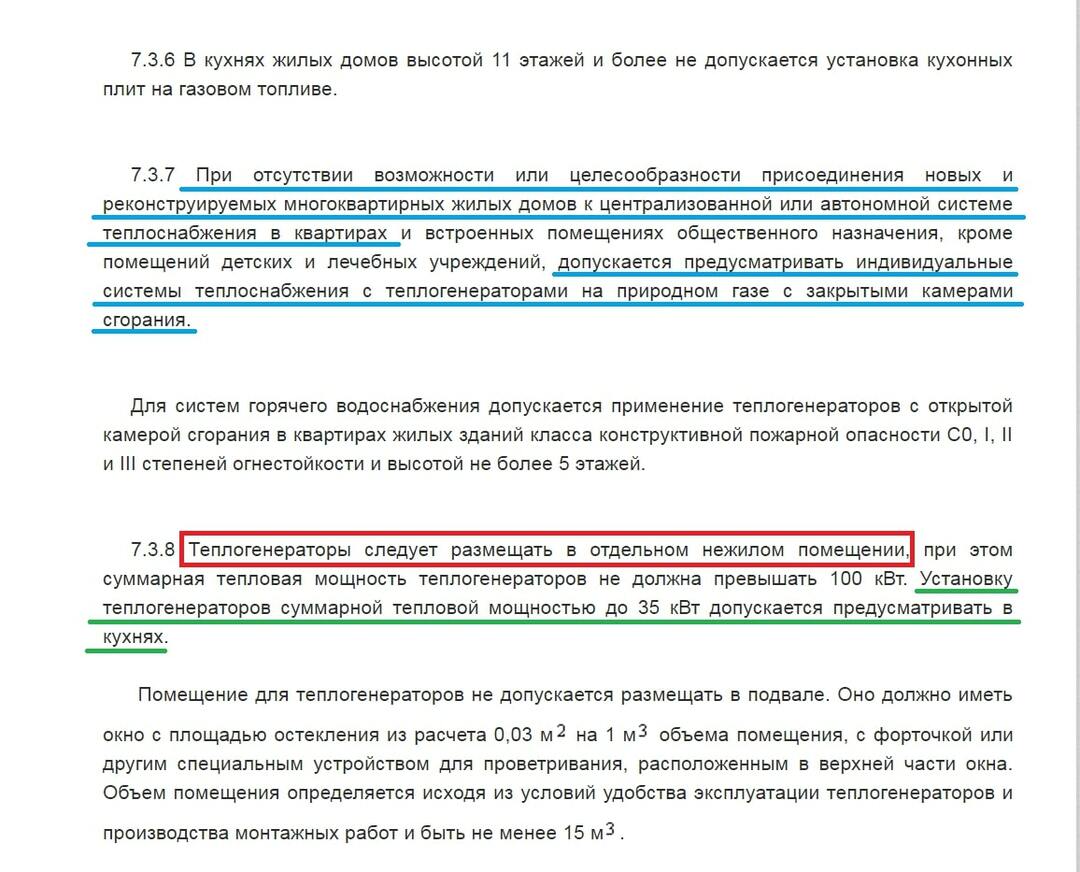
Please note that, subject to certain conditions and the impossibility of arranging another source, even according to the old SNiP, boilers with a closed combustion chamber were allowed
But instead of them, JVs appeared for 2011 and then for 2016. And just in the updated edition, the point on the height of gasification was abolished altogether. They do not reflect in any way information about the floor on which the supply of "blue" fuel is limited.
And on June 6, 2019, by order of the Ministry of Construction, put into effect SP 402.1325800.2018 Residential buildings. Rules for the design of gas consumption systems "designed for highways in which gas is used as a resource in accordance with GOST 5542 with a pressure of up to 0.005 MPa inclusive. This is just one of those cases when the joint venture is entered into the register as binding.
And you can immediately pay attention to paragraphs 5.16-5.18, which contain instructions for placing gas consumption devices in an MKD with a height of no more than 28 meters. At the same time, there are no prohibitions on installation in excess of this norm. Why exactly 28 meters?
Because the safety regulations are standardized, in houses higher than 28 meters, coordination with the Ministry of Emergency Situations and other structures is required.
Let's see two more documents. SP 60.13330.2012 "Heating, ventilation and air conditioning" and SP 41-108-2004 "Apartment heat supply of residential buildings with gas-fired heat generators" - it is practically stated in plain text that there are no restrictions on gasification of multi-storey residential buildings for 5, 10, 11 floors and above.
That is, in theory, it is officially permitted and possible at the legislative level, if the developer carries out the appropriate approvals and all conditions are met.
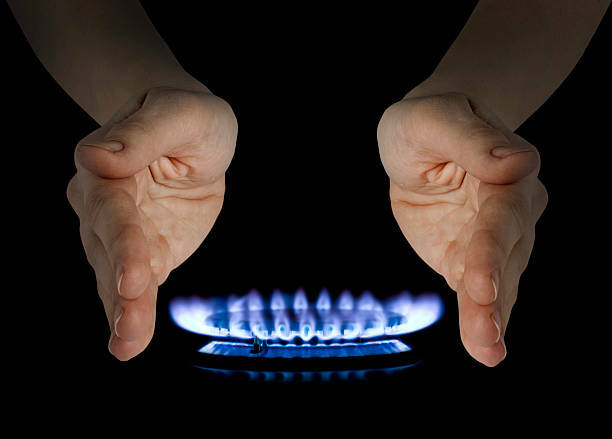
Gasification is officially allowed in every home at the legislative level. But this does not mean at all that every house can be easily gasified at any time.
But in practice, it is problematic to implement the plan, although it is quite possible, especially since modern technical capabilities allow it.
A huge number of nuances still often do not allow the construction of high-rise buildings with gas supply.
Main gas in a high-rise building
As a rule, such work is carried out even at the design stage of a high-rise building. However, developers are extremely reluctant to carry out this procedure. And that's why? Let's figure out for a start how the main gas is introduced into the apartments in general.
From the distribution network, the fuel enters the gas pipeline system. From it, it already goes to consumers along the branches. It is far from always possible to supply gas to an ordinary residential building due to overloading of the line.
We have to go around the nearest input to gas pipes, often even to the neighboring subscriber network, because the possibilities of the gas pipeline are not unlimited, but to supply gas to densely populated areas at the pressure required by law, almost unrealistic with a single-line position.
According to TU, bypassing obstacles in the fuel supply, sometimes you have to pay literally millions. And here is an apartment building, and even a skyscraper. Imagine the number of subscribers. That is, in order to provide gas for one such house, a completely separate trunk line.
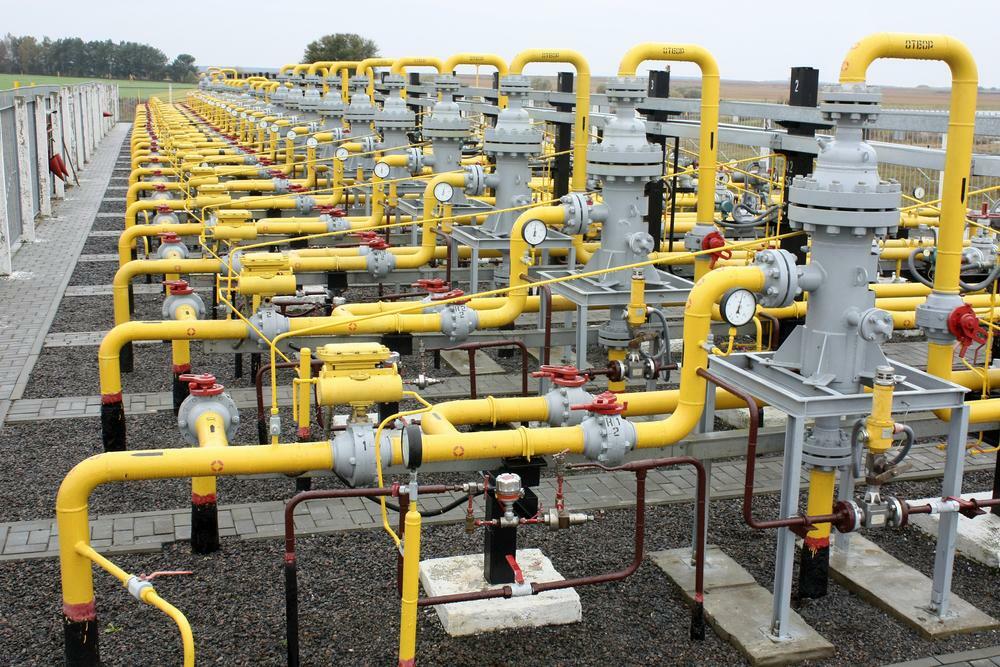
The main gas supply system during construction is usually not calculated for each MKD owner, but only approximately according to the number of possible subscribers. Therefore, for MKD, in densely populated cities, it is necessary to provide an additional line, which is costly in terms of money
But this is not all the "pitfalls". In the regulatory documents, including the aforementioned joint venture introduced on June 6, there are a number of complex technical requirements.
To enter gas into a building, the following conditions must be observed:
- The presence of 2 isolated rooms for the development of the structure of the branches.
- Special ventilation and exhaust system, capable of removing waste products from all apartments.
- Corridor ceilings, not less than 1.6 m in height with an increased degree of fire resistance.
- Building design allowing the installation of risers in kitchens and stairwells.
- A large number of valves at each section of the network.
- Equipment for high pressure and its regulation for high-quality apartment gas supply.
- Equipping the windows where the gas equipment is located with an easily ejected glass structure.
- Gas control system on stoves and boilers.
- Emergency dispatch notification.
- Boiler power over 50 kW exclusively in isolated rooms of the apartment.
- The presence of gas sensors with an auto-system for cutting off the gas supply.
In addition, the same "Technical Regulations on the Safety of Household Gas Equipment", but this time without looking back towards gas tanks and cylinder installations, requires the supply only to those buildings, the tier of which will provide the practical possibility of eliminating fires.
At the same time, there is an unspoken reservation that it is also possible to equip the local fire-fighting system.
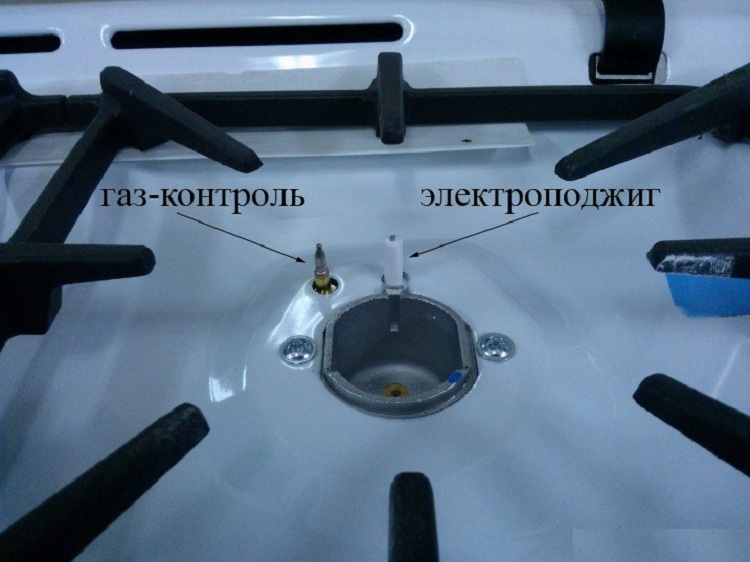
The gas control system shuts off the gas supply to the stove when the burner flame goes out. Acts on the principle of a shut-off valve similar to that found in gas boilers
Thus, partial supply of the high-rise is practically impossible, and the final cost of the work on full gas supply, even at the design stage, will seem prohibitive.
Experts say that it is simply unprofitable and technically difficult to carry out such work within the framework of an ordinary high-rise apartment building.
What is the danger of gasification?
What is LPG? It is a mixture of propane and butane, colorless and odorless. When we say “it smells like gas,” we technically make a mistake, since the fuel itself has no aromas.
An odorant is added to it - ethyl mercaptan, which has a characteristic unpleasant odor, comparable to rotten eggs or even stale meat. This is necessary so that a person can identify the leak in time using the sense of smell.
Liquefied gas, as we remember from chemistry lessons, is heavier than air. When it leaks, it "flows", first of all, into the basement, filling them. In addition, in fact, from 5 to 15% of the gas from the volume of the air in the room, it can easily provoke human poisoning and even fire / explosion.
The number of gasified houses is growing every year. And along with them, the number of victims of domestic gas explosions. In 2018, 12 emergencies occurred in the country, with serious consequences, and this was in just 3 months.
A huge number of major tragedies occurred in apartment buildings in 2019 due to improper handling of gas or poor technical condition of fuel lines.
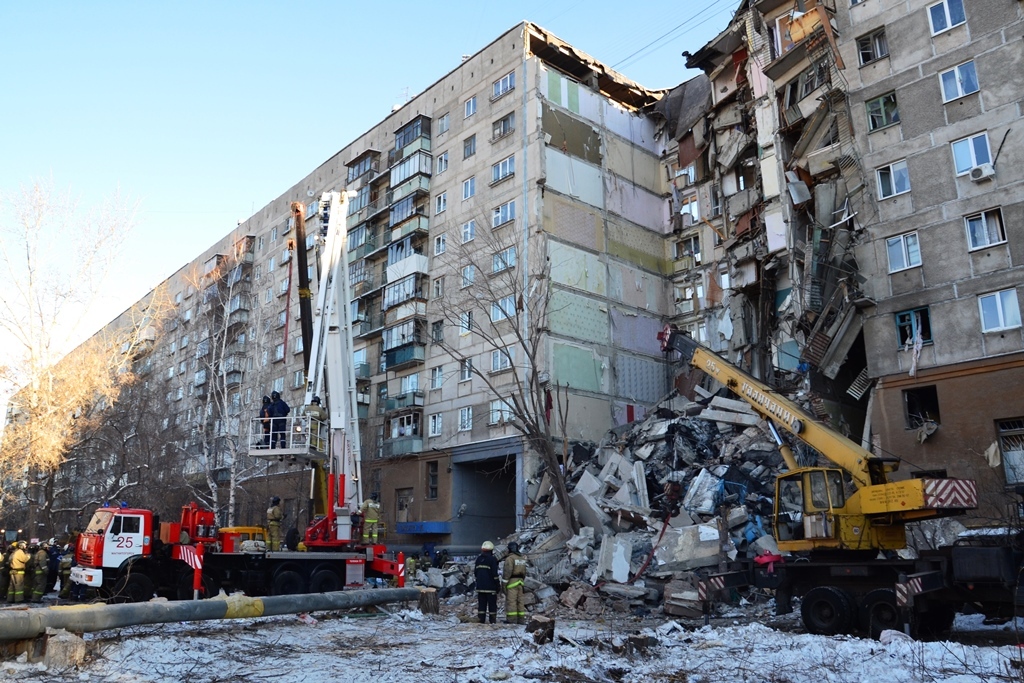
On December 31, 2018, as a result of a household gas explosion in Magnitogorsk, 35 apartments were destroyed. 39 people died, including 6 children
An explosion even in a one-story private house takes the lives of people and brings serious destruction. And here is a high-rise building with thousands of residents and guests. Moreover, a tall structure with a common system of floors, the collapse of which completely, can provoke even a small blast wave.
Another reason why the authorities have developed a number of restrictions that impede gasification is the problem of the technical possibility of rescuing citizens living above the 11th floor. These people are actually doomed in a medium-power explosion. Even if they miraculously survive, there is little chance of finding them alive under the rubble of a large building, especially in the cold season.
Projects to ban gasification of high-rise buildings
After the abolition of SNiPa 2003, which prescribes bans and restrictions on the altitude of the installation of gas appliances, many structures and departments tried to reintroduce them, especially after a series of explosions.
So, at the end of 2017, such a proposal was made by Rostekhnadzor, urging people to think about electrification. Deputies of "Fair Russia" also made similar attempts. The initiators propose to enter a veto at least in new buildings, even if they leave gasification in already built houses with the replacement of stoves with devices with maximum protection "gas control".
However, this is unlikely to happen. Almost all tragedies are related to the human factor; the technical capability allows the safe use of gas equipment in high-rise buildings.
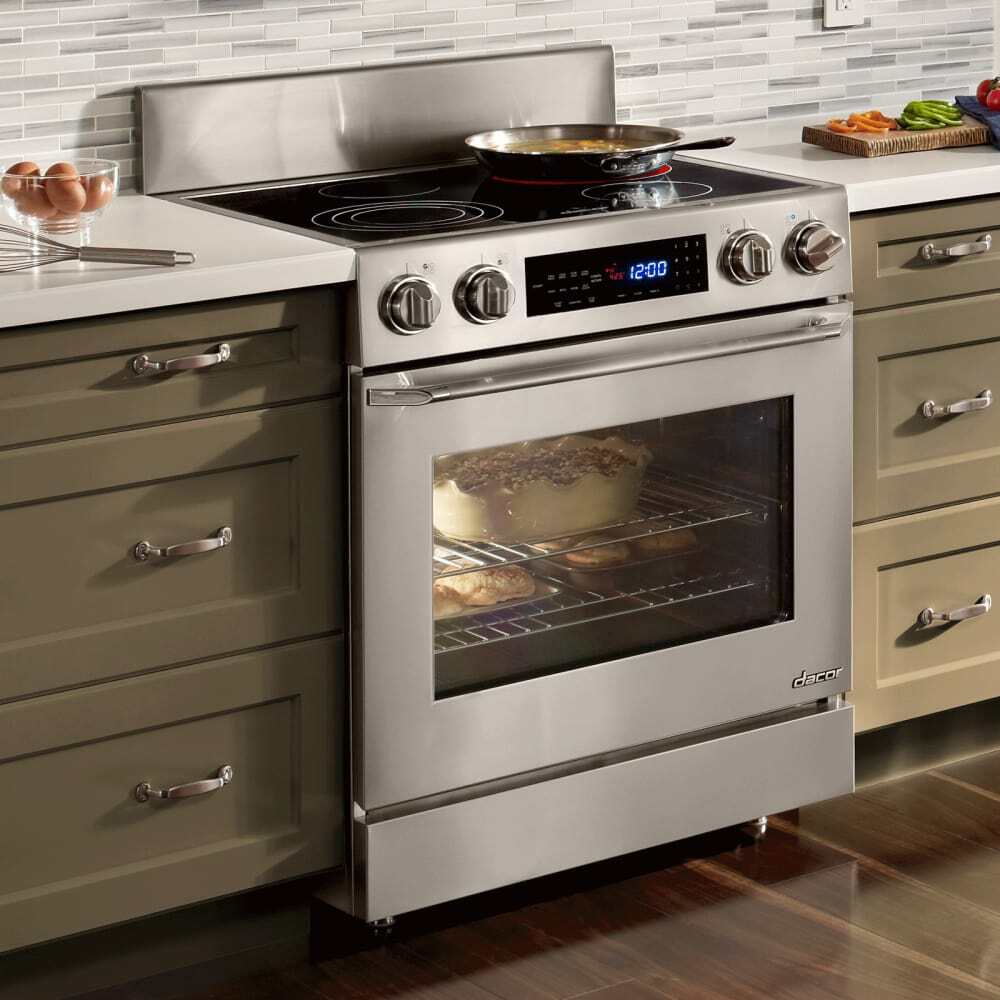
Electric stoves are considered safer than gas equipment for residents of MKD. But many are in no hurry to give up gas. There were even joke memes like those that it is impossible to roast a steak with high quality on electro.
Although many people understand that relying on the adequacy of their neighbors and the safety system of gas installations is not always advisable. There are cases when some residents of apartment buildings try to refuse from gas, but not always requests are satisfied for various reasons, such as weak electrical wiring, not suitable for electric stove.
It turns out a double-edged sword. On the one hand, it is difficult to gasify a building, on the other hand, which is already equipped with such equipment, to electrify it.
Conclusions and useful video on the topic
After a series of domestic gas explosions in the country, checks of distribution networks began in many regions:
Technologies do not stand still, resource-supplying organizations are getting more and more opportunities to implement the most daring projects. Even before 2011, it was difficult to imagine that "blue fuel" would ever appear in apartments above the 11th floor. And already today there are no restrictions at all.
And, although the project still seems crude and technically ill-conceived, we can safely say that a couple more will pass. years, and residents of high-rise buildings will be able to use gas everywhere, and not only in rare, expensive projects.
What do you think, to what floor should houses be gasified - as in the old standards, up to 5-11 or without restrictions? Maybe guests from high-rise buildings already equipped with gas will appear here and share their experience? Write your questions and opinions in the comments, and also participate in the discussion of this material.

